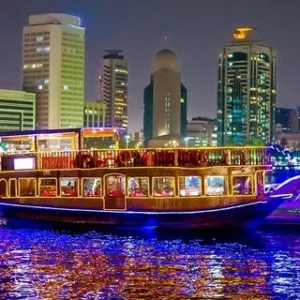Rajasthan has long been celebrated for its royal legacy, magnificent forts, and timeless architecture. Yet, beyond the popular destinations lies a lesser-explored gem—Hanumangarh. Rich in history and culture, Hanumangarh offers travelers an authentic glimpse into India’s ancient past. This vibrant district in northern Rajasthan is not only a historical treasure trove but also a key site for early civilizations like the Indus Valley.
In this blog, we uncover the top 10 historical places to visit in Hanumangarh, Rajasthan—perfect for history lovers, spiritual travelers, and cultural explorers. From grand forts to prehistoric sites, Hanumangarh has something extraordinary for every traveler.
1. Bhatner Fort: The Heart of Hanumangarh’s History
Bhatner Fort is the pride of Hanumangarh and is believed to be one of the oldest forts in India. Built around 1700 years ago by King Bhupat of the Bhati dynasty, the fort has witnessed several dynasties including the Mughals and Rajputs.
- Why It Stands Out:
Its thick sandstone walls, ancient watchtowers, and on-site temples make it a standout destination in Hanumangarh. - Travel Tip:
Visit during early mornings for fewer crowds and better photography.
2. Kalibangan: Hanumangarh’s Indus Valley Connection
Located 35 km from Hanumangarh town, Kalibangan is an important archaeological site linked to the Indus Valley Civilization. Excavations here have revealed planned streets, drainage systems, and fire altars.
- Why Visit Kalibangan:
It’s a UNESCO-recognized site that provides tangible proof of India’s ancient urban planning and culture. - Bonus Stop:
Pair your visit with the Kalibangan Museum nearby for deeper insights.
3. Shila Mata Mandir: Spiritual Soul of Hanumangarh
Nestled within the Bhatner Fort complex, Shila Mata Temple is one of the most revered temples in Hanumangarh. Dedicated to Goddess Durga, the temple features a stone idol believed to have miraculous powers.
- Highlight:
The temple draws devotees especially during Navratri for blessings and rituals. - Cultural Insight:
Local legends speak of the idol’s divine origin from a sacred rock (Shila).
4. Gogamedi Temple: Hanumangarh’s Divine Warrior Legacy
About 80 km from Hanumangarh, Gogamedi Temple is dedicated to Goga Ji, a Rajput warrior revered as a deity across Rajasthan and Punjab.
- Why It Matters:
The temple is the center of an annual fair (mela) attracting thousands of devotees and storytellers. - Local Tip:
Visit during August to witness vibrant cultural festivities.
5. Brahmani Mata Temple, Pallu: A Sacred Hanumangarh Landmark
Located in the village of Pallu, this ancient temple is dedicated to Brahmani Mata, a powerful deity in local Rajasthani traditions.
- Spiritual Vibe:
Surrounded by sand dunes and peaceful settings, this temple is perfect for those seeking tranquility. - When to Visit:
Navratri brings the temple to life with fairs and celebrations.
6. Kalibangan Museum: Where Hanumangarh’s Ancient Past Lives On
Managed by the Archaeological Survey of India, the Kalibangan Museum is a must-visit for anyone keen on understanding Hanumangarh’s ancient timeline.
- What You’ll See:
Seals, terracotta toys, tools, and ancient scripts from the Harappan era. - Educational Angle:
Informative charts and dioramas make it great for students and researchers.
7. Bhadrakali Temple: Hanumangarh’s 5,000-Year-Old Sanctuary
This sacred site is believed to be over 5,000 years old and holds deep cultural and spiritual importance in Hanumangarh.
- Temple Features:
Black stone idol of Goddess Bhadrakali and serene courtyard for meditation. - Visitor Tip:
The temple is best visited during early morning prayers for a peaceful experience.
8. Pili Banga: Hanumangarh’s Lesser-Known Prehistoric Gem
Pili Banga or Pilibanga is another site near Hanumangarh that has yielded fascinating Indus Valley artifacts and ruins of early settlements.
- Why Go:
It’s ideal for offbeat travelers looking to walk the same land ancient people once did. - Photography Tip:
Golden hours offer a magical touch to your archaeological photo captures.
9. Sila Mata Ki Dungri: Hilltop Heritage of Hanumangarh
Located on a small hill (Dungri), this lesser-known site is a hidden wonder of Hanumangarh with its tribal connections and mystical legends.
- Cultural Insight:
The temple is especially significant to local tribal communities and farmers. - Scenic Value:
Panoramic views of the desert plains from the hilltop are truly rewarding.
10. Tibbi Fort Ruins: Echoes of Ancient Hanumangarh
The Tibbi Fort ruins are all that remain of a once-strong outpost. While the structure has decayed over time, it holds significant historical relevance.
- What to Expect:
Ancient walls, earth mounds, and untold stories of military prowess. - Pro Travel Tip:
Carry water and sun protection—this is truly off the beaten track!
Why Visit Hanumangarh: A Historical Gateway of Rajasthan
Hanumangarh offers more than just history—it gives you a cultural experience wrapped in rustic charm, local legends, and untouched archaeological wonders. Unlike the crowded forts of Jaipur or Jodhpur, Hanumangarh allows you to explore ancient heritage at your own pace.
How to Reach Hanumangarh
- By Air: Nearest airport is Bathinda (approx. 90 km away)
- By Train: Hanumangarh Junction is well connected to major cities
- By Road: State-run buses and private cabs are easily available
Best Time to Explore Hanumangarh
The best time to visit Hanumangarh is between October and March, when the weather is cooler and sightseeing is enjoyable. Avoid summer months due to high desert temperatures.
Plan Your Trip with Adotrip
At Adotrip, we help you discover destinations that are often overlooked. From personalized itineraries to bookings and local guides, we’ve got you covered.
Adotrip – Nothing is Far!
FAQs about Hanumangarh
1. Where is Hanumangarh located?
Hanumangarh is in northern Rajasthan, near the Punjab border.
2. What is Hanumangarh famous for?
It’s known for Bhatner Fort, Indus Valley ruins at Kalibangan, and spiritual temples.
3. How old is Bhatner Fort?
It is believed to be around 1,700 years old.
4. Is Hanumangarh safe for solo travelers?
Yes, Hanumangarh is considered a safe and welcoming place.
5. What is the best season to visit Hanumangarh?
October to March offers the most comfortable weather for sightseeing.
6. Are guided tours available in Hanumangarh?
Local guides are available at major attractions like Bhatner Fort and Kalibangan.
7. Is Kalibangan open to tourists?
Yes, Kalibangan and its museum are open to the public during designated hours.
8. What can you buy in Hanumangarh?
Handicrafts, traditional Rajasthani fabrics, and local snacks.
9. Are there any accommodation options near Kalibangan?
Most stay options are in Hanumangarh town, about 35 km from Kalibangan.
10. Can I visit all 10 sites in one trip?
Yes, with proper planning, a 2–3-day trip is sufficient to cover these locations.
11. Is Hanumangarh suitable for family travel?
Absolutely! It offers a mix of education, culture, and spirituality.
12. What festivals are celebrated in Hanumangarh?
Navratri, Goga Navami, and regional fairs attract many pilgrims and tourists.
13. How do I book a trip to Hanumangarh with Adotrip?
Visit Adotrip.com, and search “Hanumangarh” for custom travel packages.
14. Is there mobile network coverage in rural areas of Hanumangarh?
Yes, most major networks have good coverage, though remote areas may have weak signals.
15. What are nearby attractions to Hanumangarh?
Nearby sites include Sri Ganganagar, Bhatinda, and Pilibanga for more regional explorations.
Read More: segisocial








